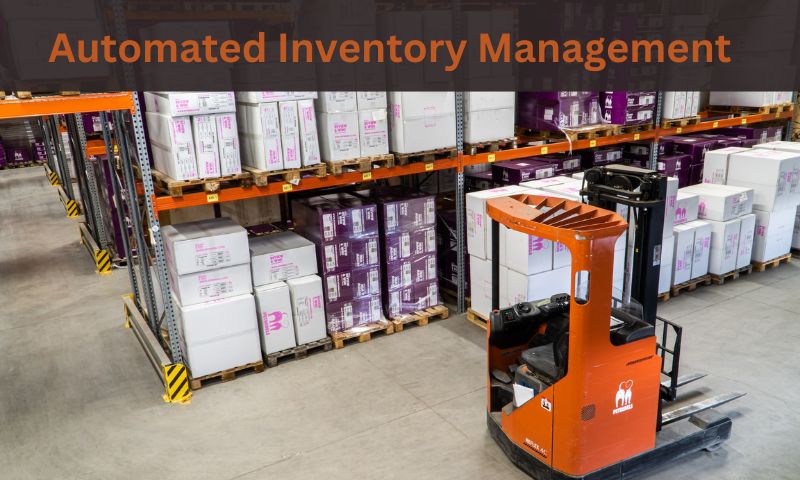If you’re running an eCommerce business, keeping track of inventory can be a daunting task.
But, with automated inventory management, it’s easy to streamline your operations and ensure that your products are always in stock.
Table of Contents
What is Automated Inventory Management?
Automated inventory management is the use of software and tools to keep track of inventory levels, sales, and orders.
This allows businesses to easily track and manage their inventory, reducing the risk of stockouts and overstocking.
How Does Automated Inventory Management Work?
Automated inventory management is a process that allows businesses to efficiently manage their inventory without manual intervention.
It works by using software and technology to keep track of inventory levels and updates them automatically in real time.
Here’s how it works:
- Integration: Automated inventory management software is integrated with your eCommerce platforms such as Shopify or WooCommerce.
- Real-time tracking: Once integrated, the software tracks inventory levels in real time. This means that as soon as a product is sold, returned, or restocked, the inventory level is automatically updated.
- Alerts: The software sends alerts when inventory levels reach a certain threshold. This helps businesses to stay on top of their inventory levels and avoid stockouts.
- Multiple Locations: Automated inventory management software can also track inventory levels across multiple locations. This is particularly useful for businesses with warehouses or multiple retail locations.
Benefits of Automated Inventory Management
The benefits of automated inventory management are many.
We have mentioned some most common benefits below,
Accurate Inventory Tracking:
With automated inventory management, you can easily track your inventory levels in real time.
This can prevent any inaccuracies and errors that may arise with manual tracking.
Moreover, it can also provide insights into which products are selling fast and which ones need to be restocked, improving your inventory management strategy.
Time-Saving:
Automating inventory management can save a considerable amount of time.
By eliminating the need for manual tracking, you can use this time to focus on other important aspects of your eCommerce business, such as marketing and customer service.
Improved Efficiency:
Automated inventory management systems can help to streamline your operations by reducing manual intervention.
With automated systems in place, you can receive alerts when inventory levels are low or when it’s time to reorder, and this can help to reduce errors and increase efficiency.
Cost-Effective:
One of the most significant benefits of automated inventory management is its cost-effectiveness.
By optimizing inventory levels and reducing stockouts and overstocking, you can reduce the costs associated with lost sales, excess inventory, and other unnecessary expenses.
This can help to maximize your profits and improve your bottom line.
Automated Inventory Management Pros and Cons
If you’re an eCommerce business owner, you may be considering implementing an automated inventory management system.
While it can have many benefits, it’s important to weigh the pros and cons before making a decision.
Pros of Automated Inventory Management
- Accurate Inventory Tracking: One of the biggest advantages of automated inventory management is that it helps ensure accurate inventory tracking.
- Time-Saving: Automating inventory management can save you a lot of time, as you no longer have to manually track inventory levels.
- Improved Efficiency: Automated inventory management helps streamline operations, reducing the risk of errors and improving overall efficiency.
- Cost-Effective: By reducing the risk of stockouts and overstocking, automated inventory management can help to reduce costs associated with excess inventory or lost sales.
Cons of Automated Inventory Management
- Initial Investment: Implementing an automated inventory management system can be expensive, with costs ranging from hundreds to thousands of dollars.
- Technical Difficulties: Automated inventory management relies on technology, and as with any technology, there can be technical difficulties.
- Maintenance: Automated inventory management systems require ongoing maintenance, updates, and troubleshooting to ensure they continue to work properly.
- Lack of Flexibility: Automated inventory management systems can lack flexibility, as they may not be able to adapt to certain business models or unique inventory tracking requirements.
Automated inventory management has its pros and cons, and it’s important to carefully consider them before implementing a system in your business.
Conclusion
Automated inventory management is a powerful tool that can help eCommerce businesses to streamline operations, reduce costs, and improve efficiency.
By accurately tracking inventory levels, businesses can ensure that products are always in stock, reducing the risk of lost sales and increasing customer satisfaction.
Check out this page on eCom Lightspeed to learn more about eCommerce automation.
On this page, you will find all our posts that discuss automation in the eCommerce industry.
Resources:
How to Scale With an Automated Inventory Management System.
